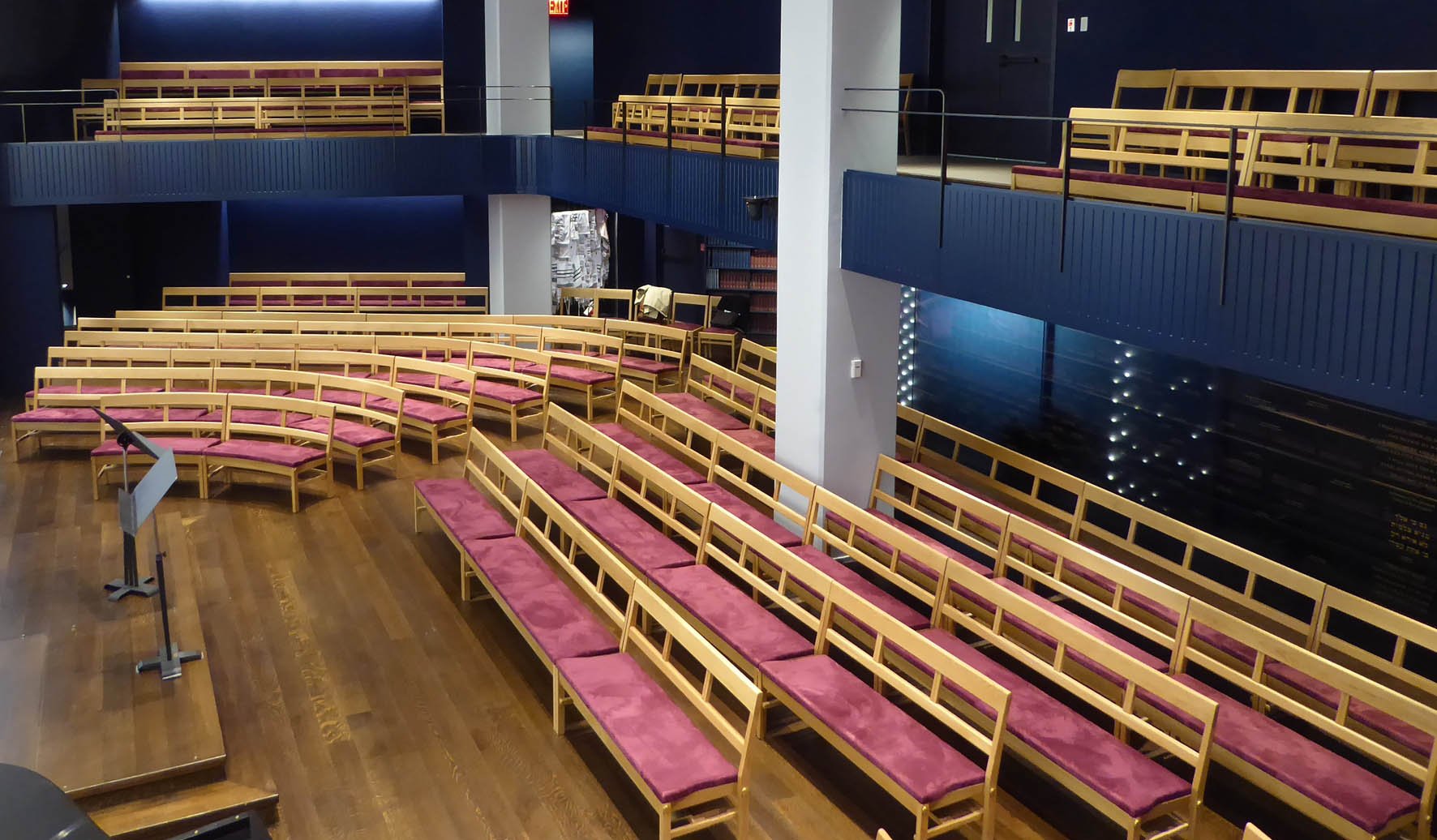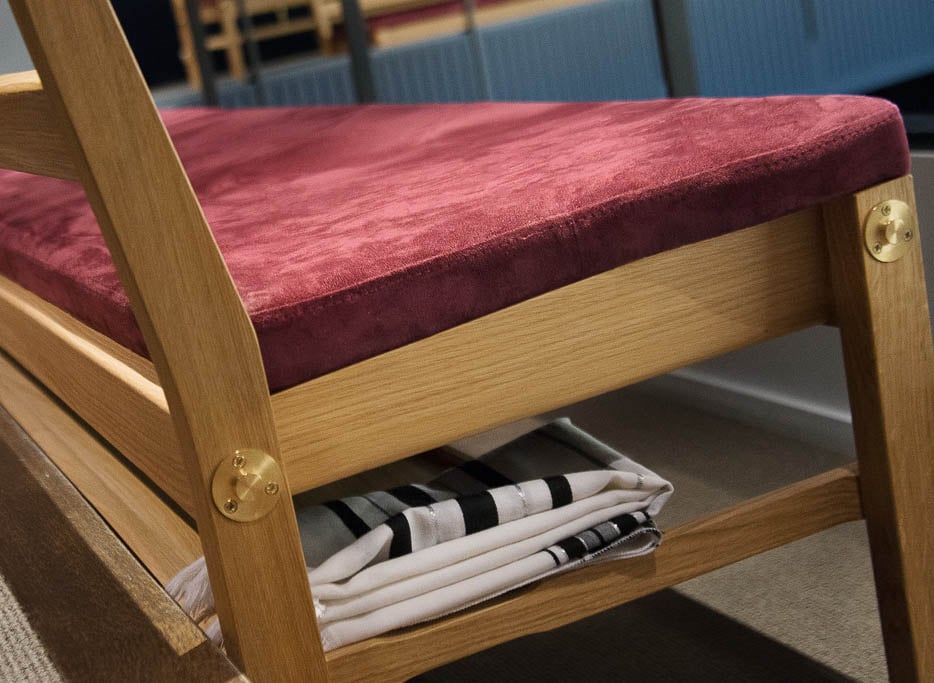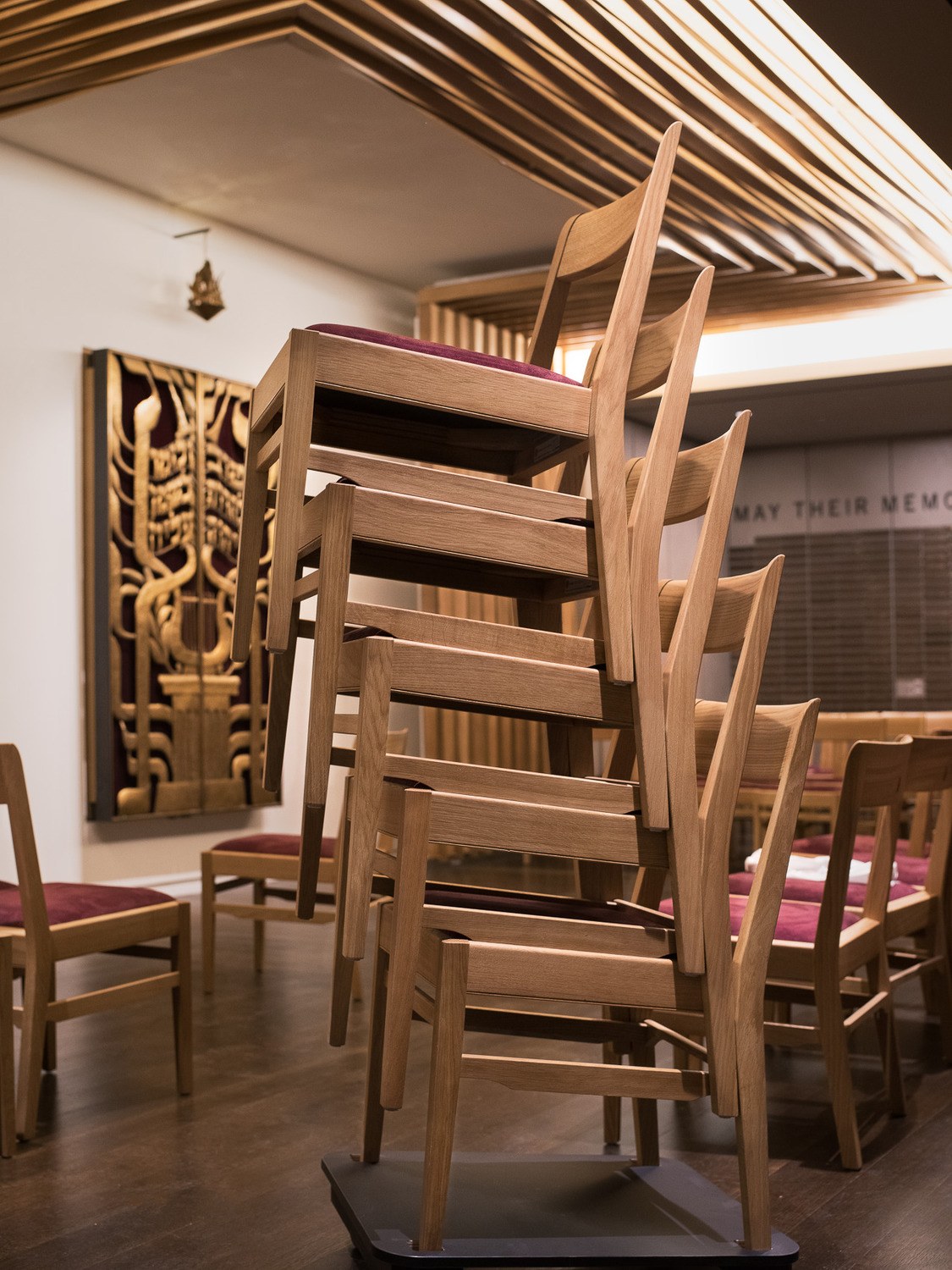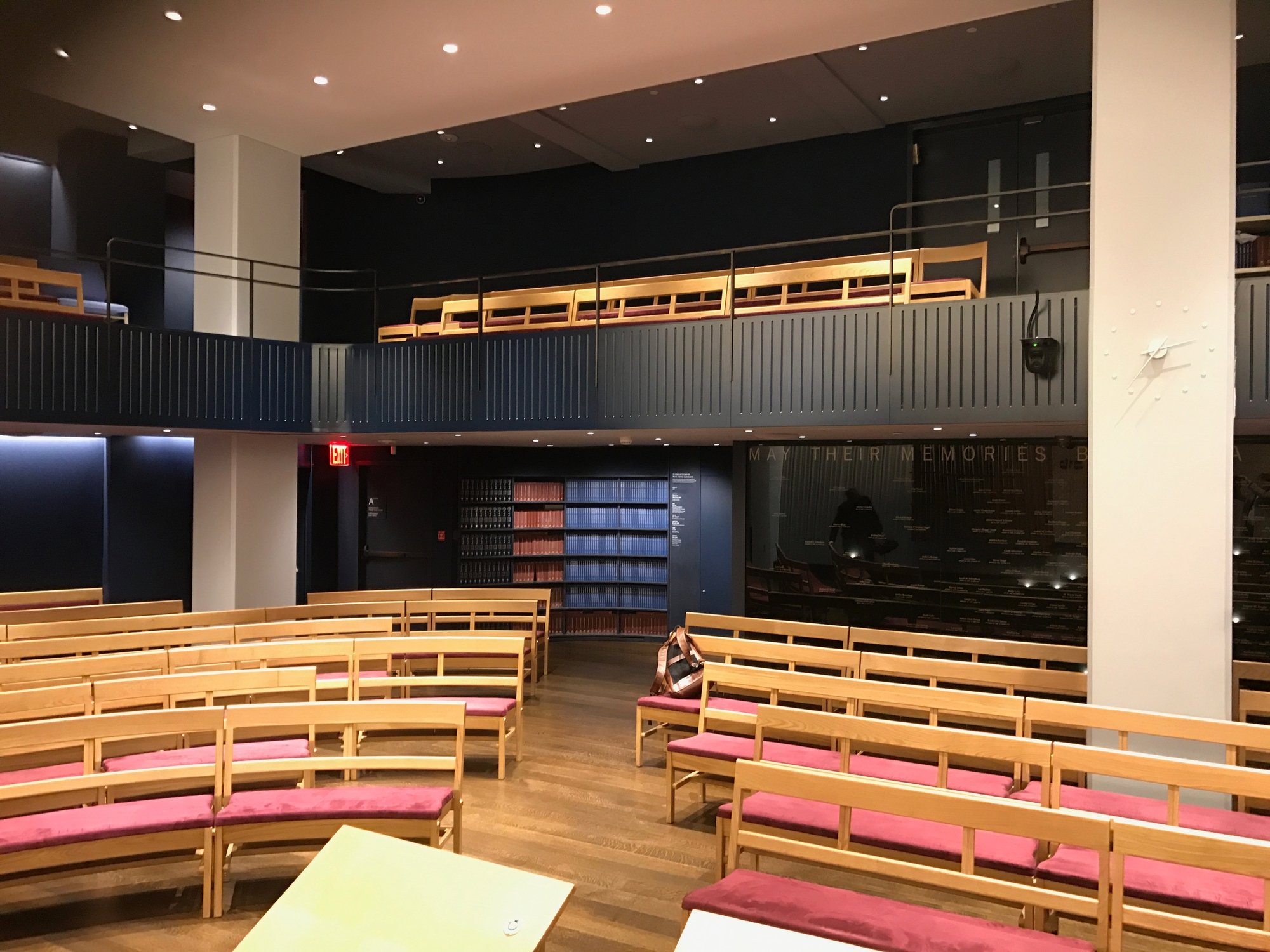This layout of the synagogue sanctuary incorporates two, three and four-seat benches, with 19 of the two-seaters being curved. Plum coloured velvet plush upholstery adds visual and physical comfort, erasing the memory of painful metal chairs.
The sanctuary, with its Memorial wall, was furnished with custom versions of the Luke Hughes stacking Lincoln timber chair, and Athena folding table to maximise the versatility of the space.
The more intimate minyan chapel and flexible meeting spaces use Luke Hughes Lincoln stacking chairs and Athena folding tables. The minyan therefore benefits from being a versatile, multi-use space and therefore plays an important role both in the liturgical practice of the synagogue and in its commercial success as a rentable venue.
The response, amongst both the congregation itself and in the opinion of the architecture critics, was not far short of ecstatic. ‘I really believe that this building is an extension of CBST’s soul,’ says Rabbi Sharon Kleinbaum, who officiated at the service of prayers of dedication in May 2016; ‘[it] will be a place for us to grow in ways we can’t imagine.’
The critics were similarly enthusiastic, not least because there is such a strong appreciation in New York of the city’s architectural heritage. Davidson’s New York magazine review praises the architect for ‘injecting much meaning into a modest space’. He continues: ‘History and symbolism weave through the building in intimate ways… and in the spots where it counts, custom luxury asserts itself – in the pews for instance, made in London by Luke Hughes, which are made of oak, for a durability that is symbolic as well as practical; curved to bring congregants as close together as possible; stackable so the room can be cleared for dancing; upholstered not just for comfort…’ remembering the ‘painful’ metal chairs.
‘Gracefully curved burgundy velvet benches’ is how Marjorie Ingall in Tablet described the seating - “Made by the Queen’s pew maker,” noted Cassell. ‘It was such a beautiful mix of rustic and elegant, geometric-mod and traditional.’
Congratulations for Congregation Beit Simchat Torah came from then President Barack Obama: ‘For over forty years, your congregation has contributed to the Jewish community in immeasurable ways - opening its doors as a house of refuge to those in need and those who are often left in the margins… As you come together on this special occasion and recommit to the values you hold dear, I wish you all the best.’ But the final word must go to Luke: ‘A wonderful thing – we were pleased to be involved. Great client, great architect, great project.’
Enjoy the article? Delve deeper into Luke Hughes & Company’s place in the Arts and Crafts tradition with the fascinating new book 'Furniture in Architecture' . Available through Thames & Hudson






